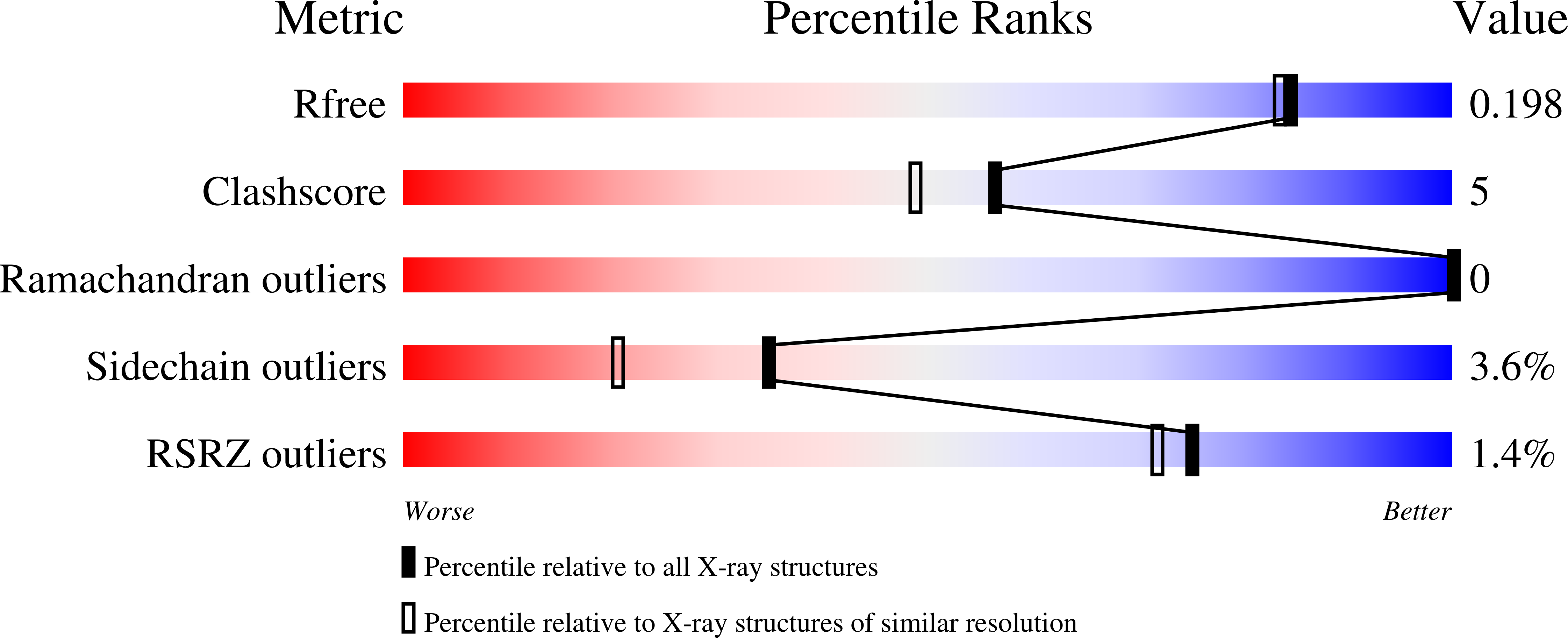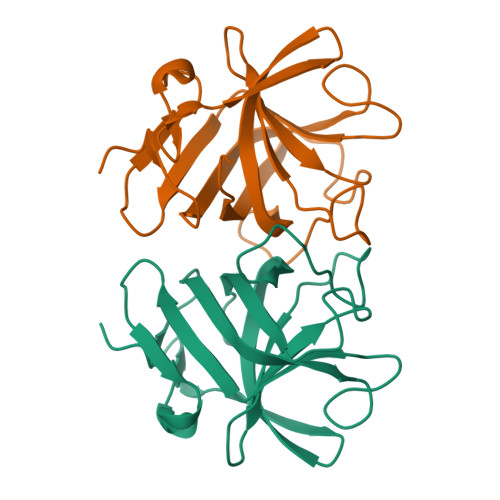Structural basis for the neutralization and genotype specificity of hepatitis E virus
Tang, X.H., Yang, C.Y., Gu, Y., Song, C.L., Zhang, X., Wang, Y.B., Zhang, J., Hew, C.L., Li, S.W., Xia, N.S., Sivaraman, J.(2011) Proc Natl Acad Sci U S A 108: 10266-10271
- PubMed: 21642534
- DOI: https://doi.org/10.1073/pnas.1101309108
- Primary Citation of Related Structures:
3RKC, 3RKD - PubMed Abstract:
Hepatitis E virus (HEV) causes acute hepatitis in humans, predominantly by contamination of food and water, and is characterized by jaundice and flu-like aches and pains. To date, no vaccines are commercially available to prevent the disease caused by HEV. Previously, we showed that a monoclonal antibody, 8C11, specifically recognizes a neutralizing conformational epitope on HEV genotype I. The antibody 8C11 blocks the virus-like particle from binding to and penetrating the host cell. Here, we report the complex crystal structure of 8C11 Fab with HEV E2s(I) domain at 1.9 Å resolution. The 8C11 epitopes on E2s(I) were identified at Asp(496)-Thr(499), Val(510)-Leu(514), and Asn(573)-Arg(578). Mutations and cell-model assays identified Arg(512) as the most crucial residue for 8C11 interaction with and neutralization of HEV. Interestingly, 8C11 specifically neutralizes HEV genotype I, but not the other genotypes. Because HEV type I and IV are the most abundant genotypes, to understand this specificity further we determined the structure of E2s(IV) at 1.79 Å resolution and an E2s(IV) complex with 8C11 model was generated. The comparison between the 8C11 complexes with type I and IV revealed the key residues that distinguish these two genotypes. Of particular interest, the residue at amino acid position 497 at the 8C11 epitope region of E2s is distinct among these two genotypes. Swapping this residue from one genotype to another inversed the 8C11 reactivity, demonstrating the essential role played by amino acid 497 in the genotype recognition. These studies may lead to the development of antibody-based drugs for the specific treatment against HEV.
Organizational Affiliation:
Department of Biological Sciences, National University of Singapore, Singapore 117543.


















